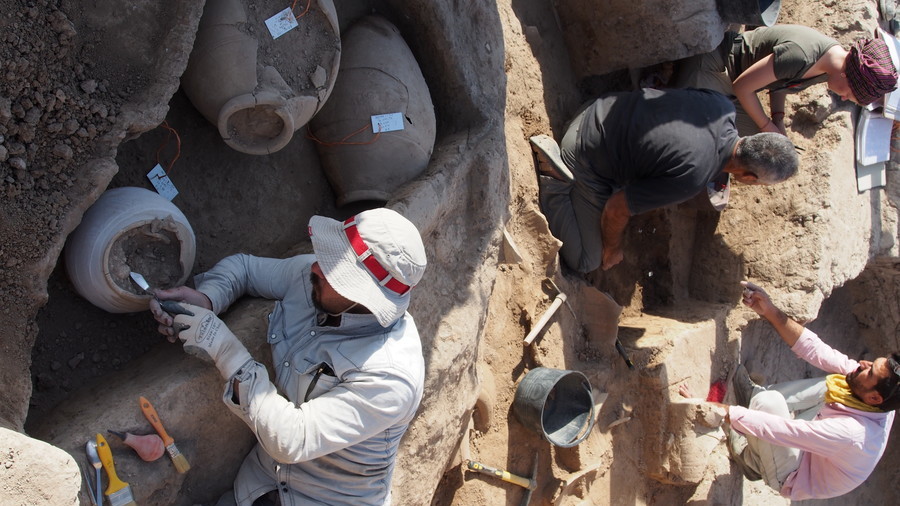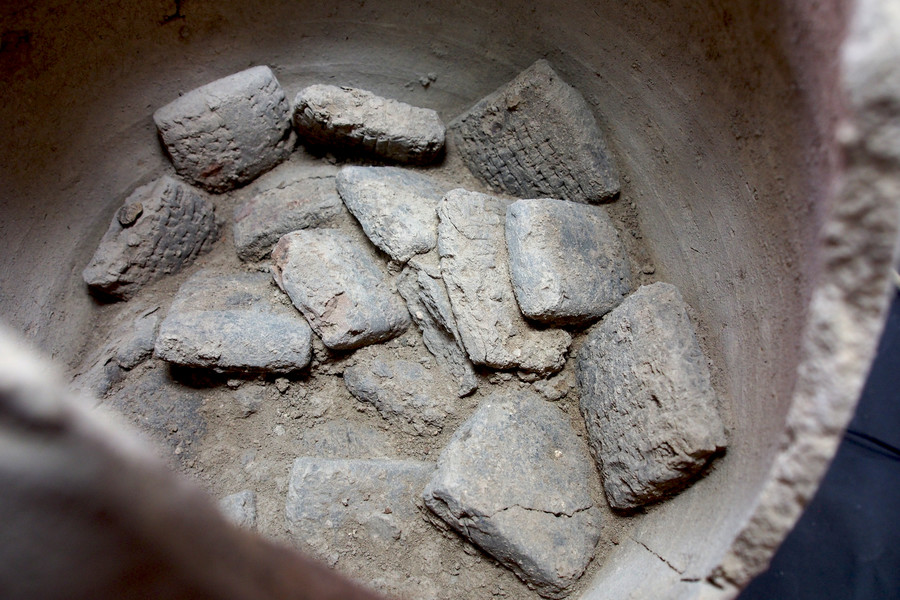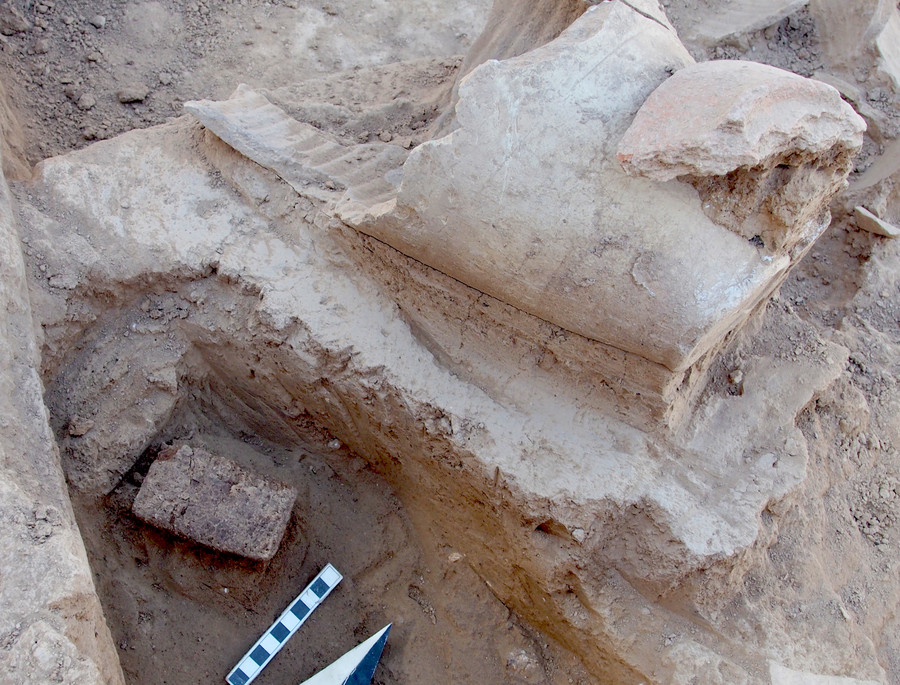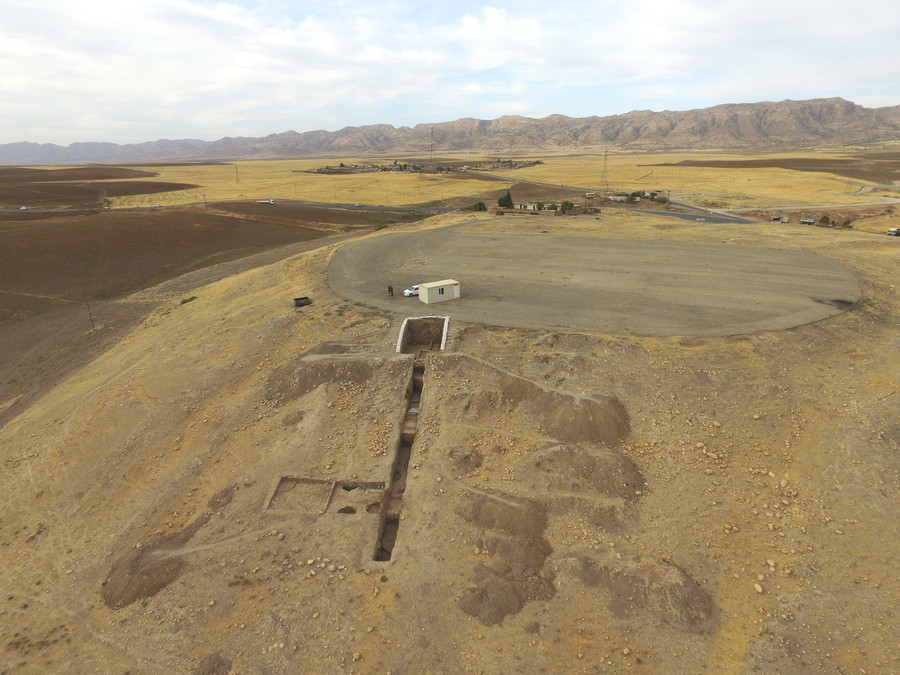It looks like you're using an Ad Blocker.
Please white-list or disable AboveTopSecret.com in your ad-blocking tool.
Thank you.
Some features of ATS will be disabled while you continue to use an ad-blocker.
share:
Wahooooooooooo Check this out!!!!!!
Lost City (Rt News Source)
I can't wait to find out what some of these tablets say plus future finds at the site?!
History could be changed people??
A collection of 3,200 year old tablets discovered concealed inside jugs have revealed the location of an ancient lost royal Mesopotamian city in the Kurdistan region of Iraq. Archaeologists from the University of Tübingen in Germany uncovered the tablets in 2017, after finding them hidden inside a collection of ceramic jugs in Bassetki in the Kurdistan region of Iraq. The tablets date back to 1250BC, when the area was part of the Middle Assyrian Empire. They revealed the ancient city of Mardaman once stood where Bassetki lies today.
Lost City (Rt News Source)
I can't wait to find out what some of these tablets say plus future finds at the site?!
History could be changed people??
Found em inside ceramic jugs...wow......
first we've heard, dang......
first we've heard, dang......
all things considered, they dont look to be in to bad of shape.
great find!
great find!
a reply to: CaptainBeno
Mardaman was a Royal City and associate with the Goddess of the Underworld, Suwala, if more of her mythos is uncovered that would be most interesting, but not to most.
Mardanan-Suwala
Mardaman was a Royal City and associate with the Goddess of the Underworld, Suwala, if more of her mythos is uncovered that would be most interesting, but not to most.
Mardaman, where a cult centre of Šuwala existed in later times. Besides, Šuwala’s Hurrian origins are confirmed by the fact that Šu-wa-[la] is celebrated by singers “in the Hurrian language”, as stated in a text from Boghazköy. From her earliest mentions on, she appears as a goddess of the netherworld
Where did the Hebrew tradition borrow the name and the conception of Šuwala as a goddess of the netherworld? – Possibly in Jerusalem, where Hurrian dynasty was ruling at least from the 14th to the first part of the 10th century B.C. The Hurrian conception of the role of Šuwala appears best in a Hurrian myth, in which her name is replaced by her title Allani, “the Lady”, “the Queen”, the determinative suffix -ni/-ne being added to Allai, “lady, queen”1
Mardanan-Suwala
I have seen rocks with what appeared to be some weird symbols carved into them over the years. They were so weathered I could not hardly make out
what they were. Probably something the native Americans scratched into the rocks. You find them near stacked rocks once in a while near the lake
shore cliffs up by Houghton. For all I know someone a hundred years ago or more could have carved them for headstones for their animals or for
someone they buried nearby. They were not in English though. I don't mess with anything that could be a head stone of a grave. Most of the people
around here over a hundred twenty five years ago or more were not buried in cemeteries.
It was a tradition that anyone responsible for the maintenance of state property (like walled cities) would put tablets inside cracks and crevices of
walls and buildings that they had help repair.
Then there is all the administrative stuff for paying employees, state budgets, lunch supply contracts, astronomical observations, property deeds and titles.
Then there is all the administrative stuff for paying employees, state budgets, lunch supply contracts, astronomical observations, property deeds and titles.
Amazing. In pretty good condition as well. There are still so many secrets still hidden under our feet that would change the way we think about
history. We just have to find them.
I love the fact that this information has been shared with us and not kept secret and put on a shelf for years.
Fascinating find.
I love the fact that this information has been shared with us and not kept secret and put on a shelf for years.
Fascinating find.
a reply to: rickymouse
We have "the tattooed rocks of raglan" here in nz,with what looks like an alphabet of some sorts carved into them. The Maori who usually put things like this in museums or hold in hi regard don't want to know about them. They had no written language,and these ricks show glyphs...maybe that's why they don't care about them....possibly cause they belong to a people that made it here before them.
We have "the tattooed rocks of raglan" here in nz,with what looks like an alphabet of some sorts carved into them. The Maori who usually put things like this in museums or hold in hi regard don't want to know about them. They had no written language,and these ricks show glyphs...maybe that's why they don't care about them....possibly cause they belong to a people that made it here before them.
originally posted by: hiddenNZ
a reply to: rickymouse
We have "the tattooed rocks of raglan" here in nz,with what looks like an alphabet of some sorts carved into them. The Maori who usually put things like this in museums or hold in hi regard don't want to know about them. They had no written language,and these ricks show glyphs...maybe that's why they don't care about them....possibly cause they belong to a people that made it here before them.
I find an occasional symbol or drawing on the rocks on my property. These people were more into breaking rocks and mosiacing them onto flat top stones. The clay glue is very deteriorated, rocks are in rows about a foot down and the mosiac rocks are hard to figure out where they belong. Earth movement and animals kicking them off has made them hard to decipher. I found some on a rock that fit together to form a turkey. Kind of neat. I also find lots of broken stone knives, I guess they buried those so people wouldn't cut their foot when walking barefoot.
I have not found any more than a few symbols on a stone here on my property, maybe there are some that have worn off, but I have not seen anything here yet. One symbol is common on the rocks, usually a W or a weird A shaped thing or something that looks like an R. I do not know what they mean. I asked the Indians and they said they had symbols like that, but so did every population in the world have those three symbols. There are probably other symbols that I am not seeing, but It is kind of hard to see things when you do not know what you are looking for.
a reply to: CaptainBeno
Interesting... I wonder if they can translate those tablets and see what it was really like back in those days.
Very Very Fascinating. Thank you for posting this. And trust me, this "goddess" is not just a Suwala thing. It is in fact, a global thing. Michael tsarion also exposes something similar about an ancient Goddess worship/ cult which caused alot of chaos, but supposedly this history was erased from the memories of many as well as historically. (Probably got lost during those times where there were massive book burnings going on.)
Interesting... I wonder if they can translate those tablets and see what it was really like back in those days.
originally posted by: Madrusa
a reply to: CaptainBeno
Mardaman was a Royal City and associate with the Goddess of the Underworld, Suwala, if more of her mythos is uncovered that would be most interesting, but not to most.
Mardaman, where a cult centre of Šuwala existed in later times. Besides, Šuwala’s Hurrian origins are confirmed by the fact that Šu-wa-[la] is celebrated by singers “in the Hurrian language”, as stated in a text from Boghazköy. From her earliest mentions on, she appears as a goddess of the netherworld
Where did the Hebrew tradition borrow the name and the conception of Šuwala as a goddess of the netherworld? – Possibly in Jerusalem, where Hurrian dynasty was ruling at least from the 14th to the first part of the 10th century B.C. The Hurrian conception of the role of Šuwala appears best in a Hurrian myth, in which her name is replaced by her title Allani, “the Lady”, “the Queen”, the determinative suffix -ni/-ne being added to Allai, “lady, queen”1
Mardanan-Suwala
Very Very Fascinating. Thank you for posting this. And trust me, this "goddess" is not just a Suwala thing. It is in fact, a global thing. Michael tsarion also exposes something similar about an ancient Goddess worship/ cult which caused alot of chaos, but supposedly this history was erased from the memories of many as well as historically. (Probably got lost during those times where there were massive book burnings going on.)
edit on th2018000000Wednesdayth000000Wed, 16 May 2018 13:15:26 -0500fAmerica/ChicagoWed, 16 May 2018 13:15:26 -0500 by SoulSurfer because: (no
reason given)
What surprises me is just how few people can still translate cuneiform writing. I know it's a "dead" language and all, but seems like out of all the
people on the planet there would be more than just a few people who have taken the time and effort to learn how to read the stuff.
a reply to: CaptainBeno
Just adding pictures here.

Peter Pfälzner, Universität Tübingen

The Assyrian cuneiform tablets in a ceramic vessel / Peter Pfälzner, Universität Tübingen

A cuneiform clay tablet on the floor of the Assyrian governor’s palace, and a broken ceramic vessel. / Peter Pfälzner, Universität Tübingen

The Bassetki tell on the broad plain of the eastern Tigris with the Zagros mountains in the background. / Peter Pfälzner, Universität Tübingen
Just adding pictures here.

Peter Pfälzner, Universität Tübingen

The Assyrian cuneiform tablets in a ceramic vessel / Peter Pfälzner, Universität Tübingen

A cuneiform clay tablet on the floor of the Assyrian governor’s palace, and a broken ceramic vessel. / Peter Pfälzner, Universität Tübingen

The Bassetki tell on the broad plain of the eastern Tigris with the Zagros mountains in the background. / Peter Pfälzner, Universität Tübingen
a reply to: SoulSurfer
The Queen of Eres, a Semitic term for Uruk, as in Eres-Kigal/Queen of Eres, to the Greeks simply Eris and she generated choice and that led to discord or chaos in a sense, Allani to the Hurrians, Sheol to the Hebrews, Sapsu to Ugarit, in all cases also understood as the Sun Goddess within the Underworld, the light in the darkness, this should probably have been kept secret.
The Queen of Eres, a Semitic term for Uruk, as in Eres-Kigal/Queen of Eres, to the Greeks simply Eris and she generated choice and that led to discord or chaos in a sense, Allani to the Hurrians, Sheol to the Hebrews, Sapsu to Ugarit, in all cases also understood as the Sun Goddess within the Underworld, the light in the darkness, this should probably have been kept secret.
a reply to: CaptainBeno
Wow...that's an awesome discovery, and looking at the picture of the tel at the link, there is still a TON more to be discovered.
I love this stuff, so thanks so much for sharing!
Wow...that's an awesome discovery, and looking at the picture of the tel at the link, there is still a TON more to be discovered.
I love this stuff, so thanks so much for sharing!
new topics
-
SETI chief says US has no evidence for alien technology. 'And we never have'
Aliens and UFOs: 1 hours ago -
This is our Story
General Entertainment: 3 hours ago -
President BIDEN Vows to Make Americans Pay More Federal Taxes in 2025 - Political Suicide.
2024 Elections: 6 hours ago -
Ode to Artemis
General Chit Chat: 6 hours ago -
Ditching physical money
History: 10 hours ago -
One Flame Throwing Robot Dog for Christmas Please!
Weaponry: 10 hours ago -
Don't take advantage of people just because it seems easy it will backfire
Rant: 10 hours ago -
VirginOfGrand says hello
Introductions: 11 hours ago
top topics
-
University student disciplined after saying veganism is wrong and gender fluidity is stupid
Education and Media: 14 hours ago, 14 flags -
Police clash with St George’s Day protesters at central London rally
Social Issues and Civil Unrest: 17 hours ago, 10 flags -
President BIDEN Vows to Make Americans Pay More Federal Taxes in 2025 - Political Suicide.
2024 Elections: 6 hours ago, 10 flags -
Should Biden Replace Harris With AOC On the 2024 Democrat Ticket?
2024 Elections: 12 hours ago, 6 flags -
One Flame Throwing Robot Dog for Christmas Please!
Weaponry: 10 hours ago, 6 flags -
Ditching physical money
History: 10 hours ago, 4 flags -
Don't take advantage of people just because it seems easy it will backfire
Rant: 10 hours ago, 4 flags -
God lived as a Devil Dog.
Short Stories: 16 hours ago, 3 flags -
SETI chief says US has no evidence for alien technology. 'And we never have'
Aliens and UFOs: 1 hours ago, 3 flags -
VirginOfGrand says hello
Introductions: 11 hours ago, 2 flags
active topics
-
-@TH3WH17ERABB17- -Q- ---TIME TO SHOW THE WORLD--- -Part- --44--
Dissecting Disinformation • 639 • : Justoneman -
University student disciplined after saying veganism is wrong and gender fluidity is stupid
Education and Media • 31 • : KrustyKrab -
SETI chief says US has no evidence for alien technology. 'And we never have'
Aliens and UFOs • 8 • : 19Bones79 -
Republican Voters Against Trump
2024 Elections • 289 • : Justoneman -
The Acronym Game .. Pt.3
General Chit Chat • 7742 • : bally001 -
"We're All Hamas" Heard at Columbia University Protests
Social Issues and Civil Unrest • 264 • : HopeForTheFuture -
Police clash with St George’s Day protesters at central London rally
Social Issues and Civil Unrest • 38 • : ohahhupthera -
Spectrophilia - Women Who Have Had Affairs With Ghosts Say Spooks Are Better Lovers Than Real Men
Paranormal Studies • 29 • : burritocat -
Should Biden Replace Harris With AOC On the 2024 Democrat Ticket?
2024 Elections • 45 • : burritocat -
Ditching physical money
History • 14 • : DerBeobachter2

